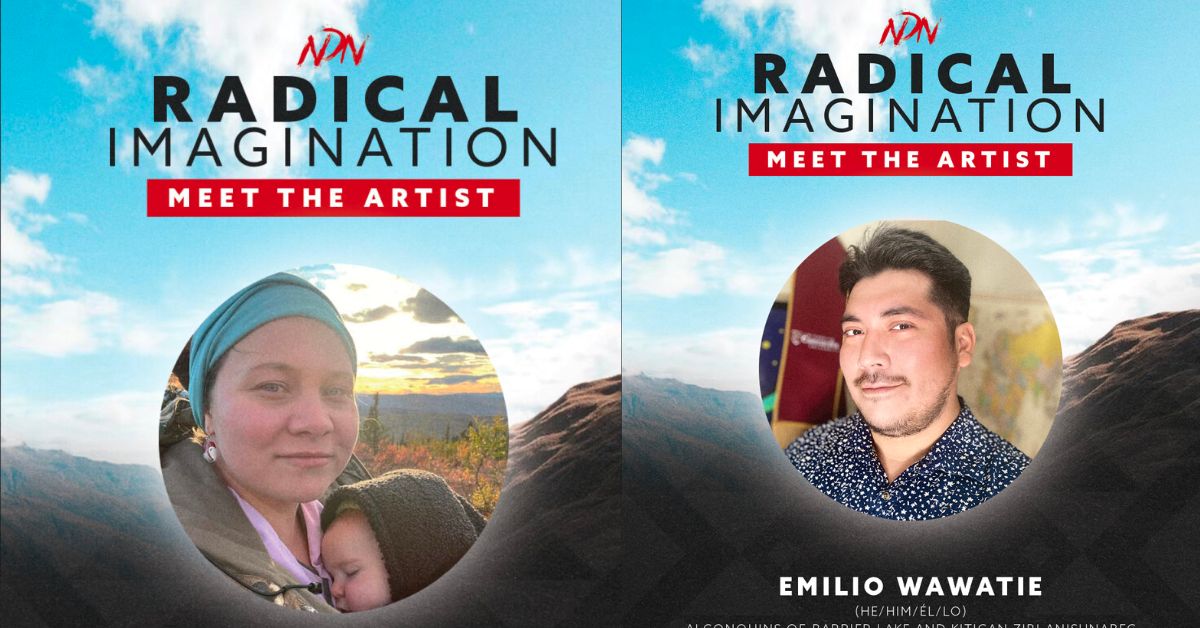NDN Collective is thrilled to share with you the 2023-25 Radical Imagination Artist & Storyteller Cohort!
This fourth cohort of the NDN’s Radical Imagination Grant is funding 10 Indigenous creatives for two-years and supporting each artist on the project they presented for the duration of the grant. The Radical Imagination grant supports artists who are in community and in movement who are informing and articulating the strategy of our efforts to defend, develop and decolonize our lands and communities.
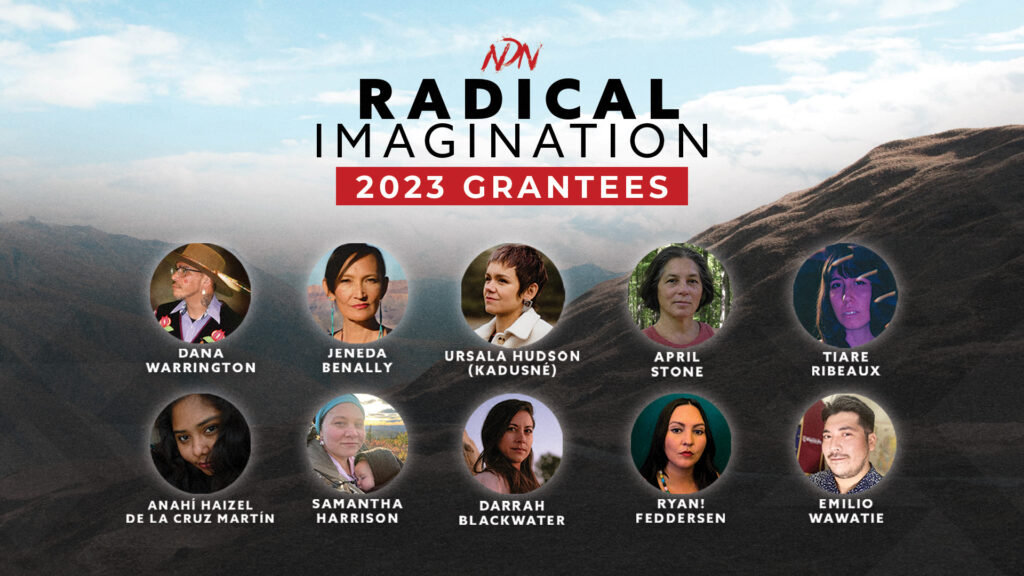
“If we envision the future we are fighting for and we radically imagine and articulate it, it will happen. When we support artists that can articulate what the future looks like when we win, artists who are working in conjunction with changemakers that are fighting to build that future, we close an important gap and make giant moves towards liberation,” said Nick Tilsen, President & CEO at NDN Collective
We are honored to introduce these talented artists, whose radical imaginations show what the future looks like when we have built Indigenous power and liberation.
This year’s cohort members focus on music, visual and performance art, photography, filmmaking, storytelling, installations, fiber arts and more. Please read more about the artists and storytellers as well as their proposed projects below:
Introducing the 2023-2025 Radical Imagination Artist & Storyteller Cohort
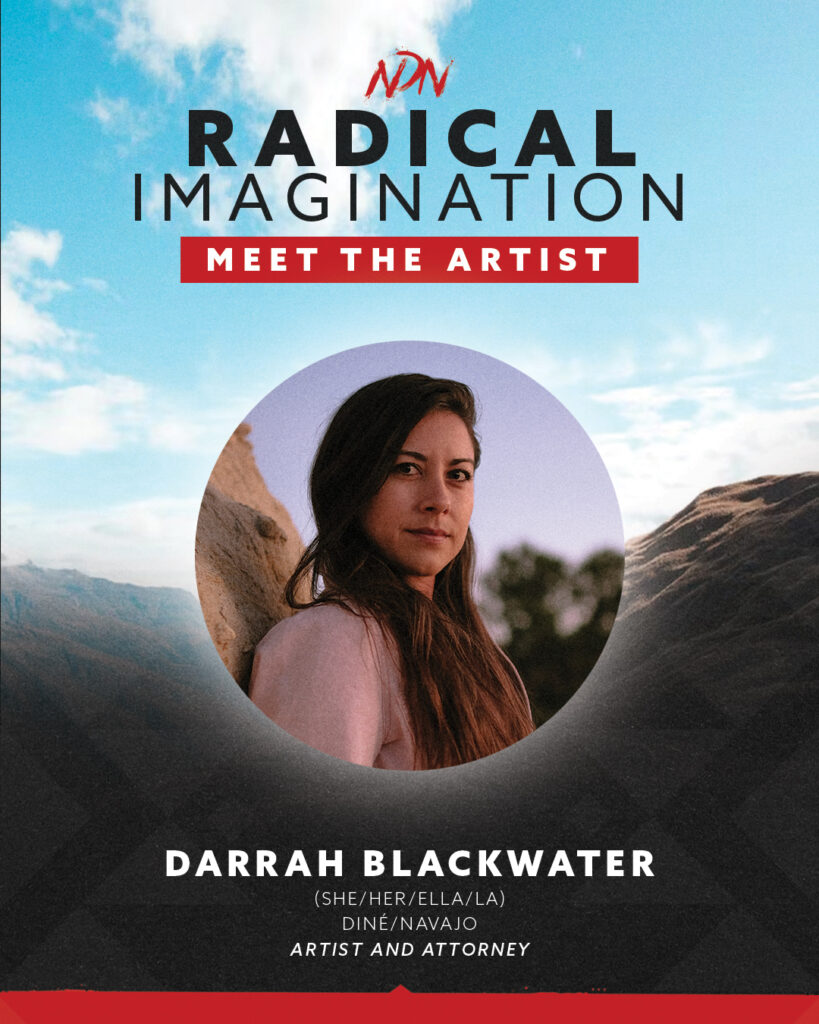
Darrah Blackwater
Diné/Navajo
Artist and Attorney
Darrah is a Diné artist and attorney from Farmington, New Mexico. She studied federal Indian law and tribal law at the University of Arizona on Tohono O’odham and Pascua Yaqui homelands. Her art often explains a concept of American history or policy pertaining to Indigenous peoples. Her conceptual art invites a viewer to consider a different perspective on Indigenous political issues through video, visual art, writing, podcast conversations, and small scale installations.
Darrah’s Radical Imagination project will further the work she’s been doing to create more conversations about political issues faced by Indigenous people.
Tiare Ribeaux
Kānaka Maoli / Kānaka ‘Ōiwi
Filmmaker, Artist and Creative Producer

Tiare Ribeaux is a Kānaka Maoli filmmaker, artist and creative producer based in Honolulu, Hawai‘i. Their artwork and films disrupt conventional storytelling methods by employing magical realist explorations of spirituality, labor, and the environment. Drawing on dreamlike imagery and Hawaiian cosmology, Tiare generates work around transformation and how our bodies are inextricably linked to the land and water systems – creating work around transformation and how our bodies are inextricably linked to land and water systems.
Ke Aka (The Reflection) is a feature length film that follows parallel narratives of diasporic Kānaka (Native Hawaiians) returning to Hawai‘i to trace their ancestry, tracing their paths as they lead to sources of water and weave into each other’s journey home.
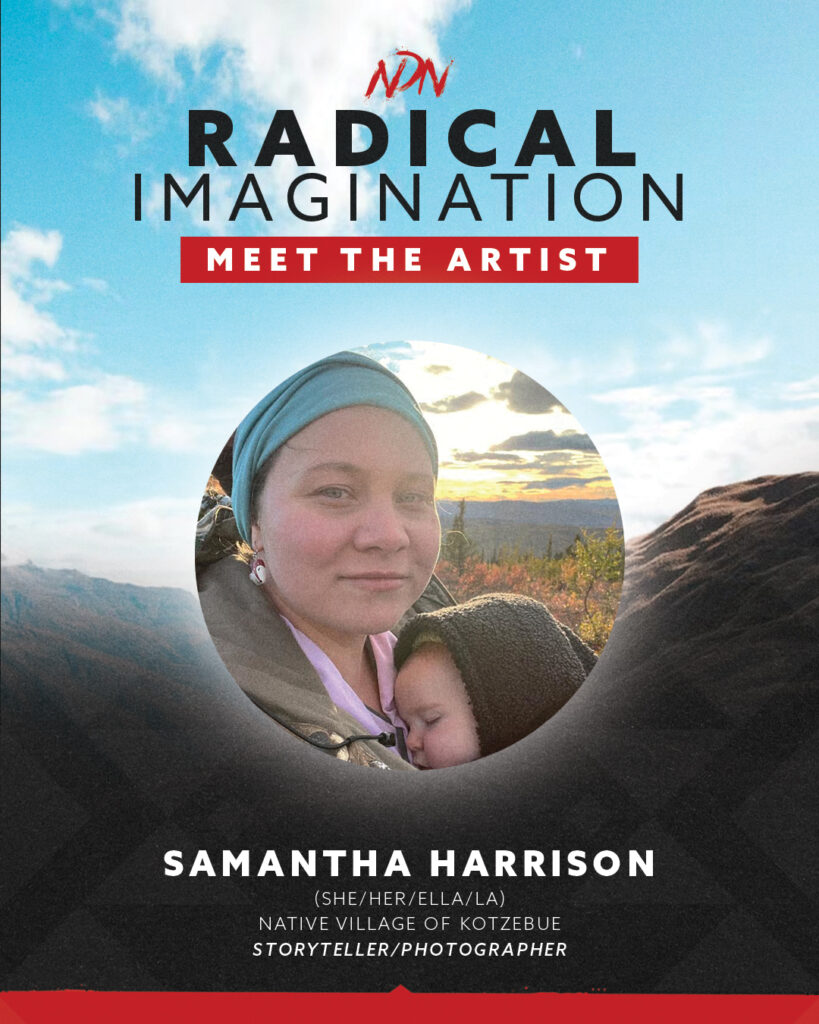
Samantha Harrison
Native Village of Kotzebue
Storyteller/Photographer
Samantha “Ataataruaq” Harrison is from both Juneau and Fairbanks, Alaska. Her work focuses on storytelling, community advocacy, nursing and photography. In partnership with Indigenous families across Turtle Island, her project is a photo essay that centers on Indigenous peoples.
Emilio Wawatie
Algonquins of Barrier Lake and Kitigan Zibi Anishnabeg
Musician, Filmmaker and Educator
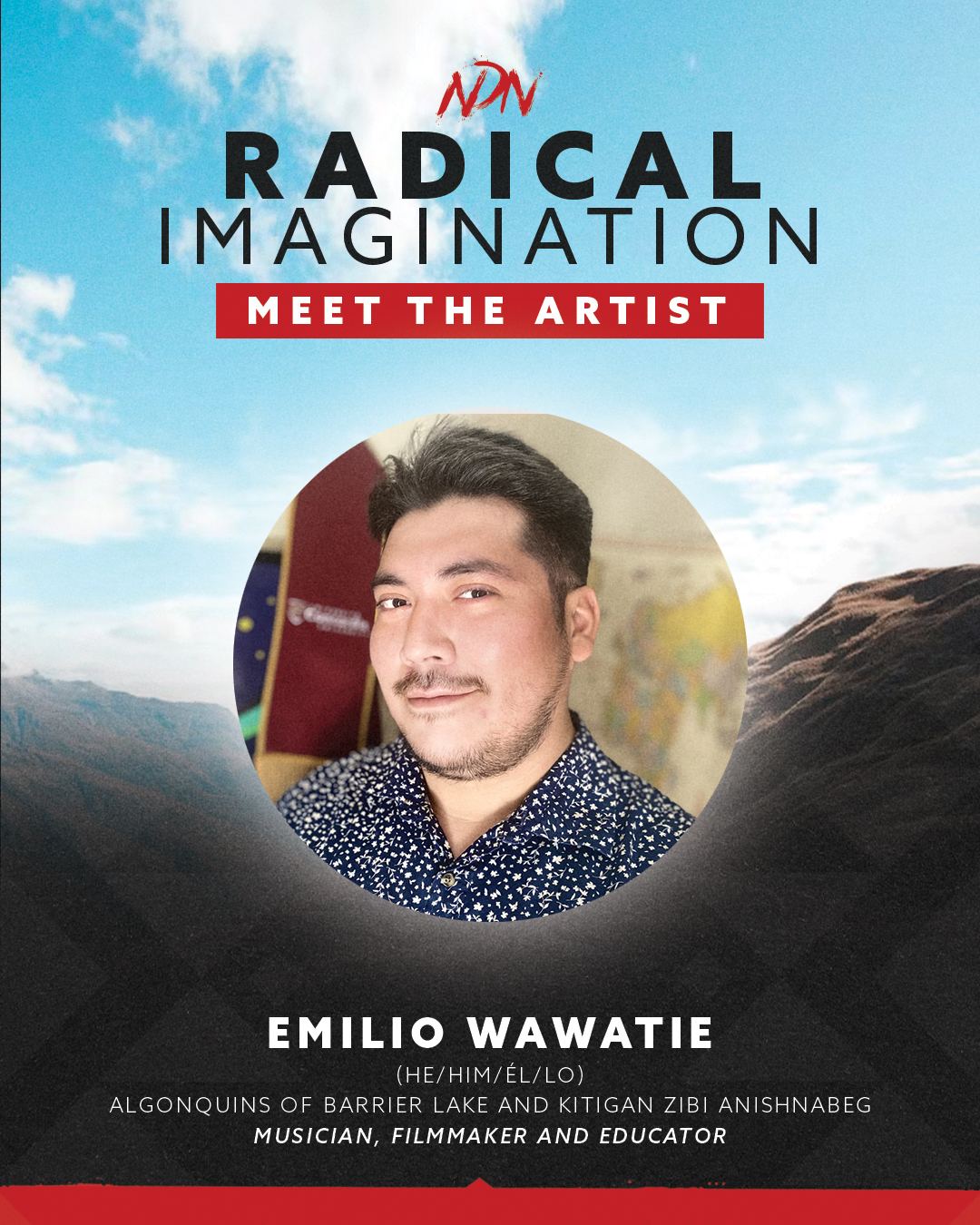
Emilio Wawatie is an Algonquin-Anishnabe musician, filmmaker and educator from Kitigan Zibi and Barrier lake, Quebec. Residing in Moniak (Montreal), he is a recent Graduate from Concordia University’s Music and First Peoples studies programs. Emilio’s current path as an artist is an interdisciplinary approach, through the practices of ethnomusicology.
Through his love and care for his Anishnabe culture, language, art and music, Emilio is actively pursuing the revitalization of Anishnabe Nikamo (Algonquin music) by cross-incorporating land-based learning, food sovereignty, research, creation and musical education. His project will enable him to fully immerse and engage with Anishnabe culture and communities. Emilio strongly believes that language and cultural revitalization reside in the collective memory of his people; and, that the land, language, songs, stories, food and medicine are all intertwined in the cultural pedagogy for the healing and collective well-being of the people and future generations.
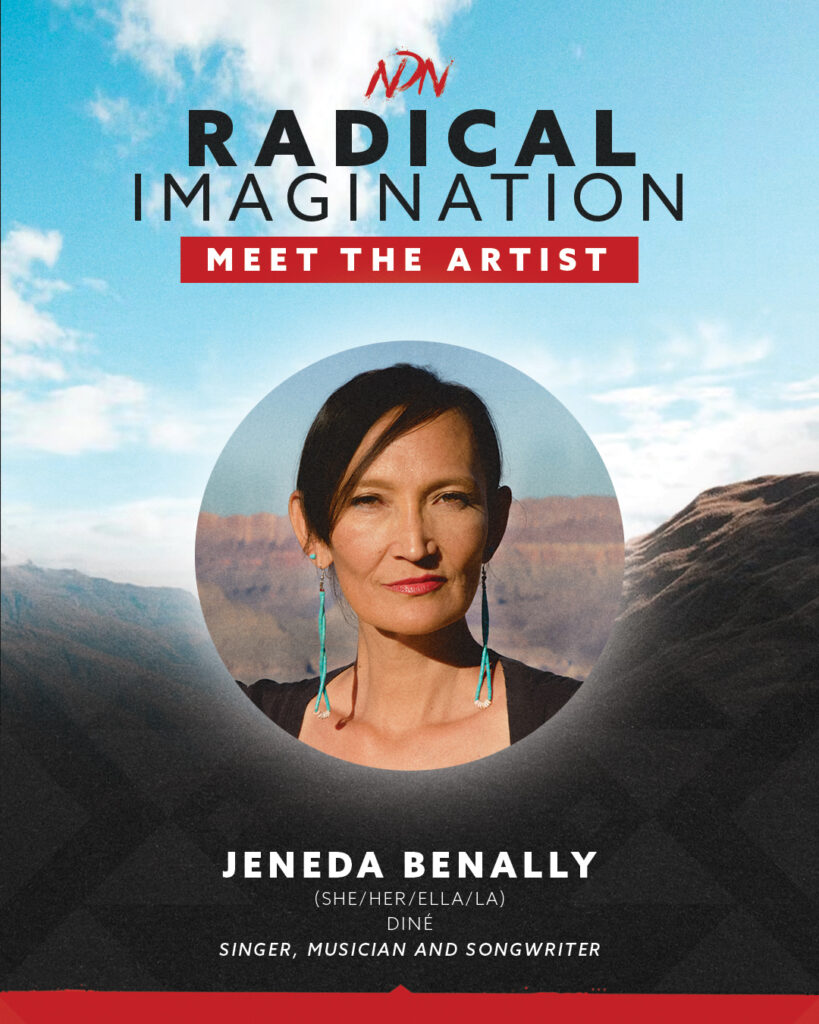
Jeneda Benally
Diné
Singer, Musician and Songwriter
Jeneda Benally is an award-winning singer/musician/songwriter in Sihasin and Blackfire. A traditional medicine practitioner and activist, she also dances with her family’s Dine’ dance troupe, “The Jones Benally Family.” Jeneda created the radio show “Indigenous YOUth Nation” to uplift and empower Indigenous youth.
“Indigenous YOUth Nation” (IYN) is a 29-minute radio show engaging youth with their own Indigenous culture in a show made by and for youth with support from Indigenous media professionals. IYN travels to different communities to give youth workshops, teaching t(w)eens how to use their voices, tell their stories, and interview community members to create a unique radio episode. Each episode focuses on challenging the colonized stereotypes of each Indigenous Nation while celebrating ancestral resilience. The goals of each workshop are youth empowerment, basic radio media literacy, teamwork, understanding the power of each person’s voice and unique journey, inciting culture and normalizing Indigenous identity for youth. IYN is a path of discovery for youth that “my culture is cool.” When we express ourselves, we celebrate the strength of culture and language that our ancestors have created for us.
Ursala Hudson (Kadusné)
Tlingit, Filipina, Norwegian, German, English
Transdisciplinary Artist
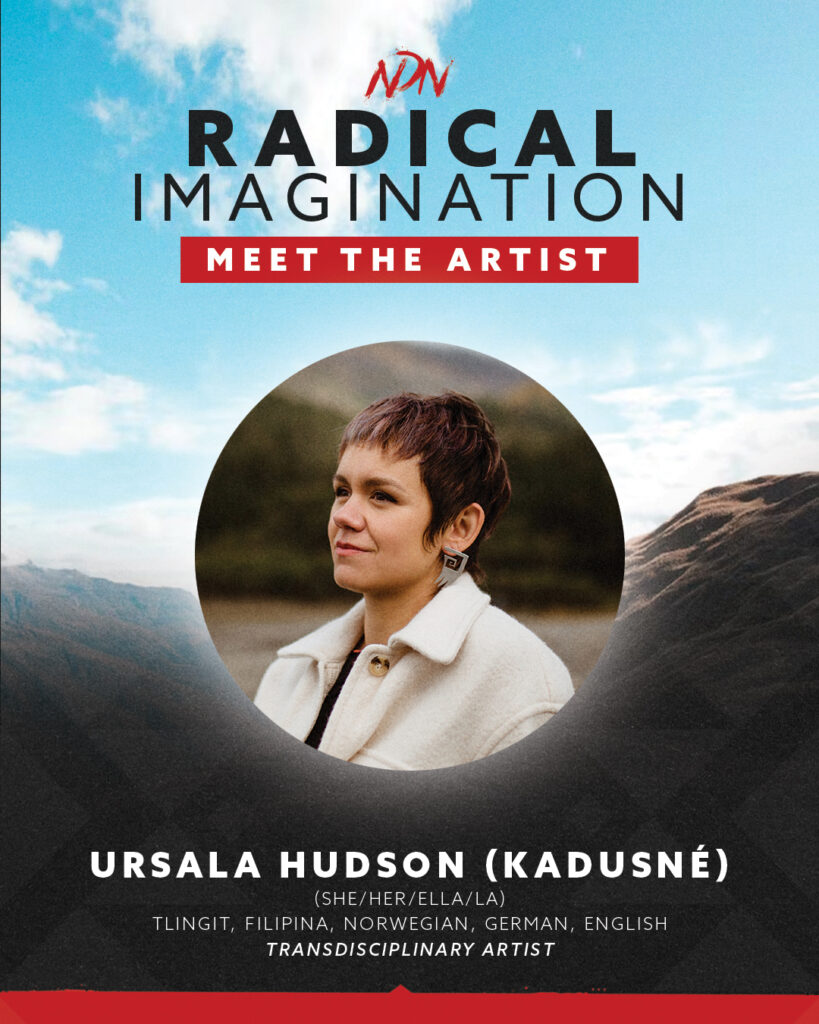
Ursala Hudson (Kadusné) is a transdisciplinary artist of Caucasian, Filipina and Tlingit descent. Through two-dimensional, performance and fiber arts, she explores her experience as a globalized woman of mixed ancestry. Ursala’s woven garments have walked runways internationally and been collected by museums such as the Burke and the Smithsonian.
In response to the gender-based inequalities of funding for Alaska Native artists, Ursala will be making an 8-foot woven Chilkat totem pole to bring light to the inequality inherent in the colonial economic system.
Totem poles are vertically documented stories to prompt awareness of specific histories in public spaces. This unique woven totem pole will illustrate the transitional period when the Tlingit people reclaimed their sovereignty after colonial contact and offer a prayer for a more equitable and self-sustaining future, announcing that traditionally-female art forms are valuable enough to deserve community support and funding.
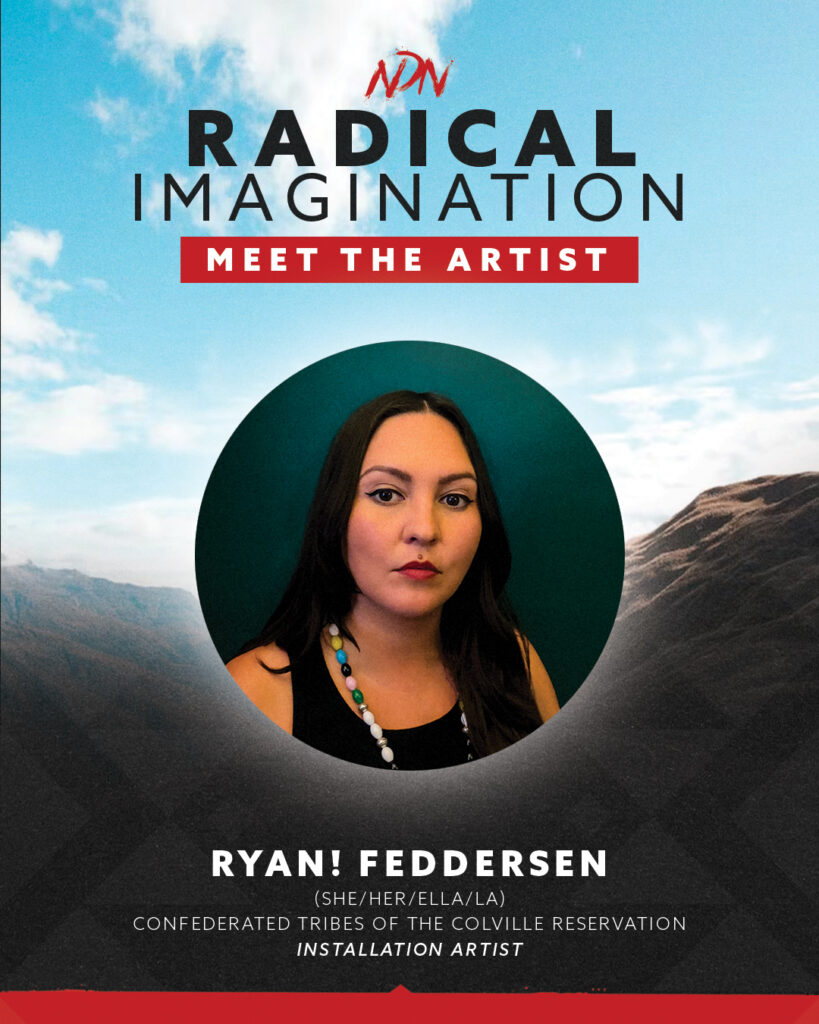
RYAN! Feddersen
Confederated Tribes of the Colville Reservation
Installation Artist
RYAN! Elizabeth Feddersen specializes in creating compelling site-specific installations and public artworks which invite people to consider our relationships to history, culture, the land, and our non-human-kin. Her practice focuses on creative problem solving to address social issues through visual allegories that provide opportunities for introspection and epiphany.
Coyote & the Monsters Yet to Slay is a series of artworks that tackle current social problems through the lens of Plateau lore. When the Animal People received their final names, Coyote was appointed chief of all the tribes and warned of the people-devouring monsters who must be stopped from killing all the people. Through our creativity, Coyote’s work can be continuous. Paired with a community engaged research component and infused with solutions-based thinking, Coyote & the Monsters Yet to Slay embodies our societal issues as monsters, that we can name and then symbolically slay.
Dana Warrington
Menominee/ Prairie Band Potawatomi
Artist
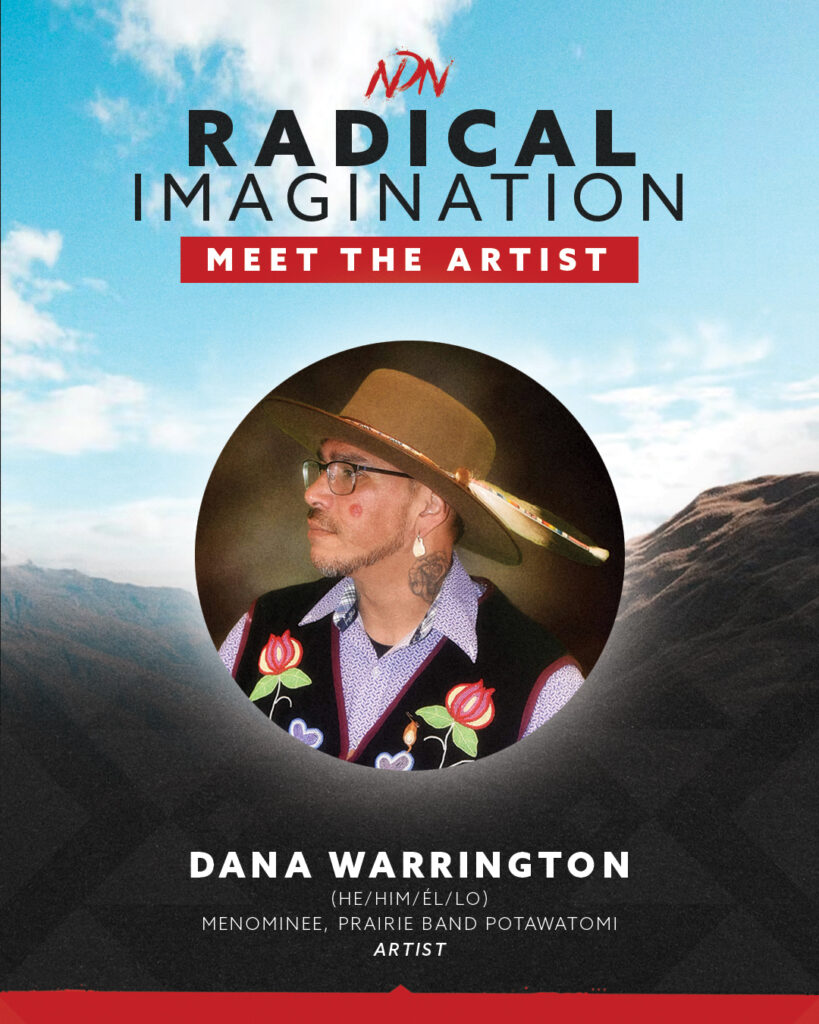
Born and raised in the Menominee territory of Wisconsin, Dana was exposed to tribal artistry through dancing, ceremonies and reservation life. Artwork is his gift and led him on a career path to being an artist. His mission is to encourage and teach the next generation of tribal artists.
Dana and his community partners have created a multi-year after-school arts program using life experiences and collective knowledge of tribal dances, regalia making and Menominee cultural legends to amplify healthy lifestyles and moral decision making from a Menominee perspective amongst youth in their community.
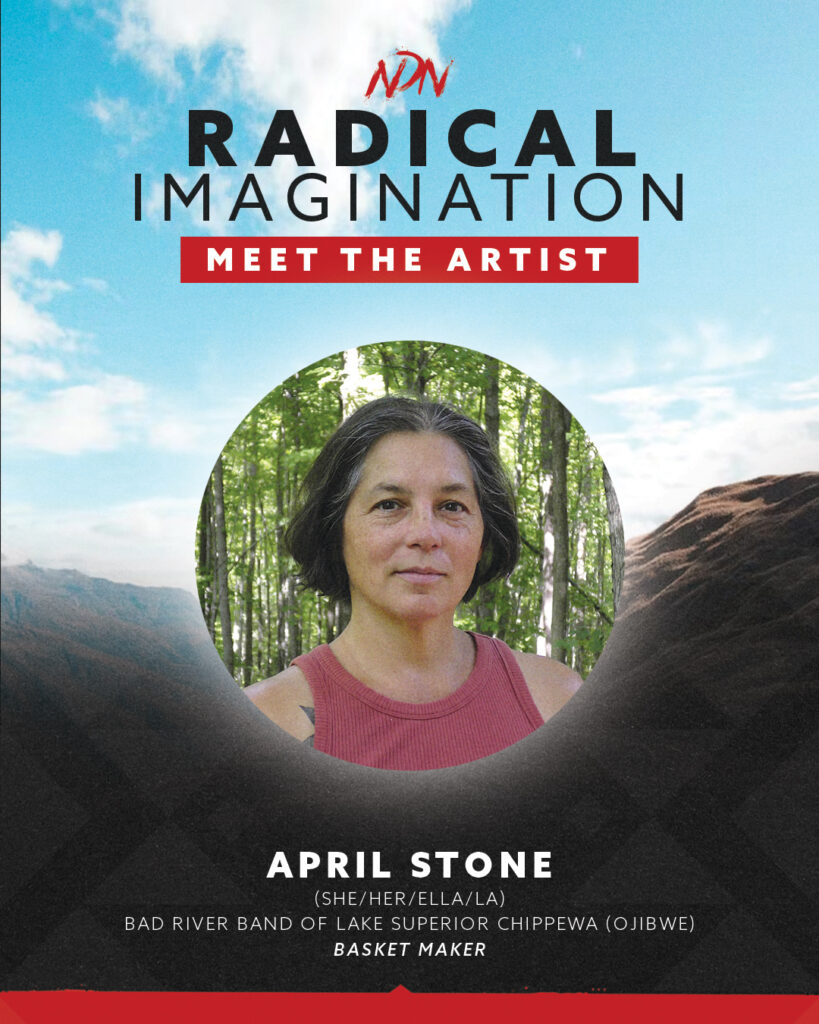
April Stone
Bad River Band of Lake Superior Chippewa (Ojibwe)
Basket Maker
April Stone is a self taught Black Ash basket maker from the Bad River reservation in northern Wisconsin. Working mostly with Black Ash splint, April weaves utilitarian baskets that are meant to be used practically. Her basket teachings extend beyond the basket-to the person- resulting in greater lessons learned.
For the next 2 years, visitors who enter her downtown Ashland studio space can expect to find themselves in a safe space to engage in conversations on natural materials; history of baskets and how they come from all cultures; the industrial revolution and decline of hand made goods; consumerism and its role within the environment; repair and use of recycled/dumpstered man-made materials; and most importantly – revitalization of baskets to our homes and landscapes. This creative and transformative work is filled with critical thinking and intention, typically resulting in a sense of self-appreciation and empowerment.
The benefits are many and touch on history, healing, lifestyle, community, and connection to the natural world.
Anahí Haizel de la Cruz Martín
Mujer Maya
Photographer
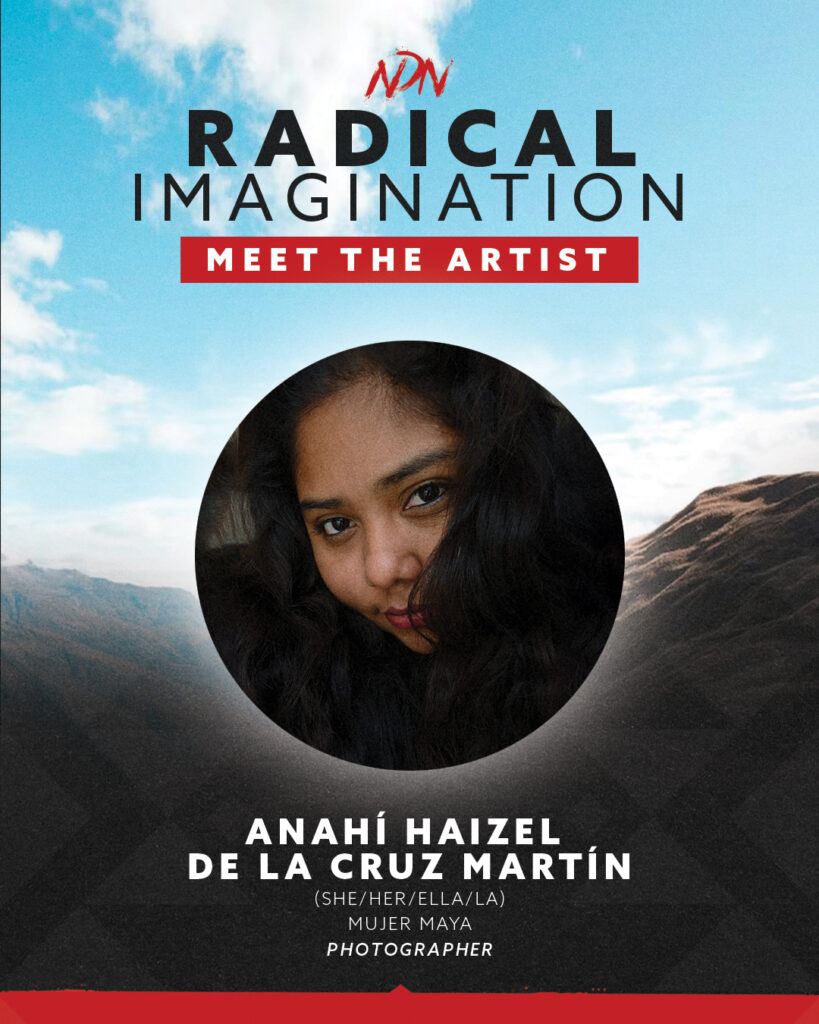
Anahi is a Mayan photographer born in Ticul, Yucatán, Mexico where she attended high school at the “Rodríguez Tamayo” Educational Center. Her work accompanies and documents processes of the struggle for and vindication of Mayan culture based on the defense of territory in the Mayan communities of Asamblea de Defensores del Territorio Maya Múuch’ Xíinbal.
“Signs of the Mayan land in the corn cycle.” The project is a series of linked images that unfold the signs of the Mayan land in the corn cycle, from our perspective. They are identity mirrors, where we can look at ourselves, where the colors, shapes, moments, lights, shadows, darkness, and flashes make us who we are, like Mayans created from corn.
We perceive by seeing but also by feeling, thinking, and identifying with these signs and symbols, this is what we can find in photography, a kind of mirror for looking at ourselves as men and women of the earth in their corn cycle variant, its messages, warnings, announcements, and risks facing our creation and recreation of life.
Congratulations to the 2023-2025 Cohort of Radical Imagination Artists and Storytellers!
Visit the Radical Imagination Grant Webpage for more information
Related Stories
Press Release | NDN Collective to Hold Free Event Focused on Resistance & Art
Press Release | NDN Collective Announces the 2023 Radical Imagination Grant Open Application Period
Blog | Announcing NDN Collective’s 2022 Radical Imagination Artist & Storyteller Cohort
Blog | NDN Collective Kicks Off Radical Imagination Virtual Festival, A Multi-Day Event
NDN Live | Radical Imagination Virtual Festival
Blog | Announcing NDN Collective’s 2021 Radical Imagination Artist & Storyteller Cohort
Blog | NDN Collective Selects Ten Indigenous Radical Imagination Artists From Across Turtle Island
